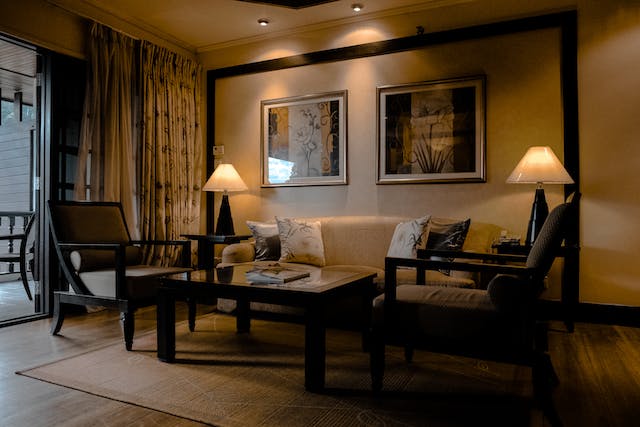The Sixties were a period of massive, unprecedented change. During the era, people witnessed the moon landing, experienced Beatlemania, saw the rise of the miniskirts, bikinis, and other cataclysms in the world’s political, cultural, social, fashion, and entertainment landscape that helped shape the many aspects of everyday living. Interior design was no exception. The 60s also allowed new ways of thinking, unleashing people’s impeccable creativity while still reflecting many of the beautiful upheavals it brought inside people’s homes. In this post, let’s look at some popular interior design styles of the 60s, which also made the decade one of the most iconic. You can also check out Guides4homeowners to see the best deals for home improvement items and read best buy guides.
Air of Revolution
English-inspired floral prints and unassuming backdrops characterized fabric patterns during the 1950s. As rebellion went underway in the Sixties, its effect was felt on home decor. Influenced by the psychedelic movement, the hippie movement, and the “flower power,” fabrics became more dynamic, wild, and colorful.
Paisley, tie-dye, and floral prints swirled on the fabric used on sofas, chairs, other furniture, reflecting the air of revolution. With Morocco and India becoming the more popular destinations of the hippie trail, Moroccan and Indian prints were also widely seen as a fabric on walls, curtains, bedspreads, wall hanging, and even in other home decors.
Space Age
As the space race also intensified during the 60s amidst the Cold War, people envisioned what it feels like to live in the future. It’s no surprise that futuristic designs and decor also became prevalent during the era by using unusual, geometric shapes, reflecting the space-age equipment and tools, the absence of gravity and existence, and the existence of orbits. New technologies during the decade made it possible to create furniture from molded plastic, such as the softly rounded space-age chairs that resembled capsules. Space-age clocks, floor lights, television, and radios helped bring space and the future inside terrestrial homes.
Cinema
Movies also influence the design world. Scenes from iconic films became an inspiration, with many homes adopting the styles they saw on the big screen. Some magazines even published guides detailing how people can closely recreate the look. Of course, faces of celebrities, be it from comic strips, murals, wallpapers, and posters, adorned the walls. They were widely accepted and served as cheap decorative tools, which have been passed from one generation to another.
Shag Rugs and Lava Lamps
Shag rugs became one of the defining home decors of the ‘60s, with nearly every bedroom and living room having them. These floor household items were linked to the hippie movement, as their unconventional comfort, appeal, and flashy colors showcased the unrestrained aesthetics of the hippies. Lava lamps are the other celebrated home decor during the ‘60s. Its mesmerizing colors that melted and swayed were deemed symbolic to the countercultural psychedelic and hippie movement while also being perfect for those who incorporated the space-age style into their homes.
Vibrant Colors
Breaking free from the quiet, traditional white that dominated the ‘50s, the sixties said hello to a whole new spectrum of colors. Initially, colors inspired by nature, such as yellow, gold, orange, and green, dominated the decade. Towards the culmination of the 60s, colors even got bolder, mirroring the boom of free-spirited thinking and freedom of expression. Vibrant neon colors, such as bright tangerine, red, fuchsia, and aqua, all became trendy, giving the homes a more rousing and gallant appeal.
Final Words
Summing it all up, the interior design style in the sixties shattered the traditional past and brought in new ideas and trends, as people also celebrated their newfangled freedom. All these proved that interior design is merely for aesthetics. It conveys the identity and the points of view celebrated by the individuals living inside the home.

